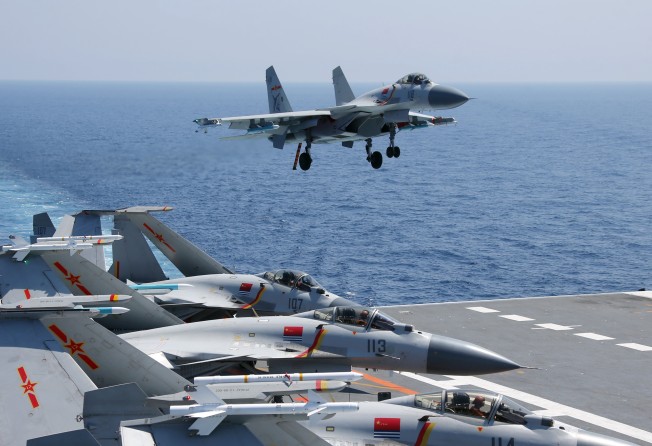
Why China’s latest Taiwan Strait drill is just the latest bout of sabre-rattling
Over the past two decades the authorities in Beijing have frequently staged displays of military might to warn against moves towards independence

China’s live-fire drill in the Taiwan Strait planned for Wednesday will be the first such exercise since 2015.
Liu Jieyi, Beijing’s top Taiwan affairs official, has said the exercise is a warning against any “attempt to split” – particularly in light of comments by Premier William Lai, who has advocated independence, and a series of pro-Taiwan gestures by the US.
Previous exercises have followed a similar pattern, with displays of military muscle coinciding with Beijing’s concerns that the island – which it regards as a renegade province of China – might seek to break away. Here are some of the most significant exercises in that period.
1995-1996: In June 1995, Lee Teng-hui became the first Taiwanese leader to visit the United States since Washington re-established diplomatic ties with Beijing when he made a “personal visit” to his alma mater Cornell University.
Beijing’s strong response triggered the worst crisis in cross-strait relations in decades.
Between July and November 1995, the PLA conducted a series of exercises that began with missile tests just 60 kilometres (37 miles) from Taiwan-controlled territory.
These were followed by exercises involving China’s most advanced warships and joint landing drills involving marines and airborne troops.

In March 1996, large-scale live-fire exercises resumed in the run-up to the island’s first presidential elections.
Many observers suspected that the exercises – including more amphibious assaults – might be the prelude to a real attack on the island.
However, the US deployed two aircraft strike groups to the area and those fears eventually proved groundless.
If Beijing had been trying to influence the result of the Taiwan election, it proved counterproductive, as Lee won a convincing victory.

1999: In July, Lee defined Taiwan’s relationship with the mainland as a “special state-to-state” one – which Beijing interpreted as a significant step towards independence.
In September, the PLA mobilised tens of thousands of troops and reservists for exercises that blocked both ends of the Taiwan Strait.
2000: A seven-day live-fire artillery drill was staged near Fujian province, around 30 kilometres from Taiwan controlled territory after the independence-leaning Democratic Progressive Party (DPP)’s Chen Shui-bian was elected as president.

2001: On April 1, a US Navy intelligence aircraft and a PLA Navy fighter collided in mid-air over the South China Sea near Hainan Island. A Chinese pilot was killed and 24 US service personnel were detained for 10 days until the two sides agreed a compromise.
In the same month, George W Bush’s administration approved the sale of US$18 billion worth of advanced weapons to Taiwan, including four Kidd-class destroyers, eight submarines and air defence missiles.
Between June and September, 100,000 members of the PLA staged a series of amphibious warfare drills around Dongshan island in Fujian.
The four-month exercises included a mock attack on an “enemy aircraft carrier” and marked the first time the PLA’s rapid response force and its most advanced Su-30 fighter jets were put through their paces.
2005-2014: Drills on hold
Following the passing of an Anti-Secession Law in Beijing in 2005 – which authorised the use of force if Taiwan declared independence – and the election in 2008 of President Ma Ying-jeou, who worked on improving relations with the mainland, major drills were put on hold for almost a decade.

2015: As anti-mainland sentiment increased on the island and the DPP’s Tsai Ing-wen took the lead in the presidential campaign, the PLA coastguard and navy carried out small-scale live-fire exercises near Dongshan in July.
2016-2017: Cross-strait tensions increased following Tsai’s election victory in May 2016. In the aftermath, the PLA’s warships, including the Liaoning aircraft carrier, stepped up patrols across the Taiwan Strait and along the east coast of the island.
2018: Wednesday’s drill will take the form of a one-day live-fire exercise in a relatively small area off the coast of Fujian. It was announced last week following the conclusion of the biggest ever naval parade staged in the South China Sea.
It follows increasing friction between Beijing and Washington. The US has recently approved further arms sales to Taiwan, including submarine technology transfer, and the passing of the Taiwan Travel Act, which allows high-level US officials to meet their counterparts from the island.